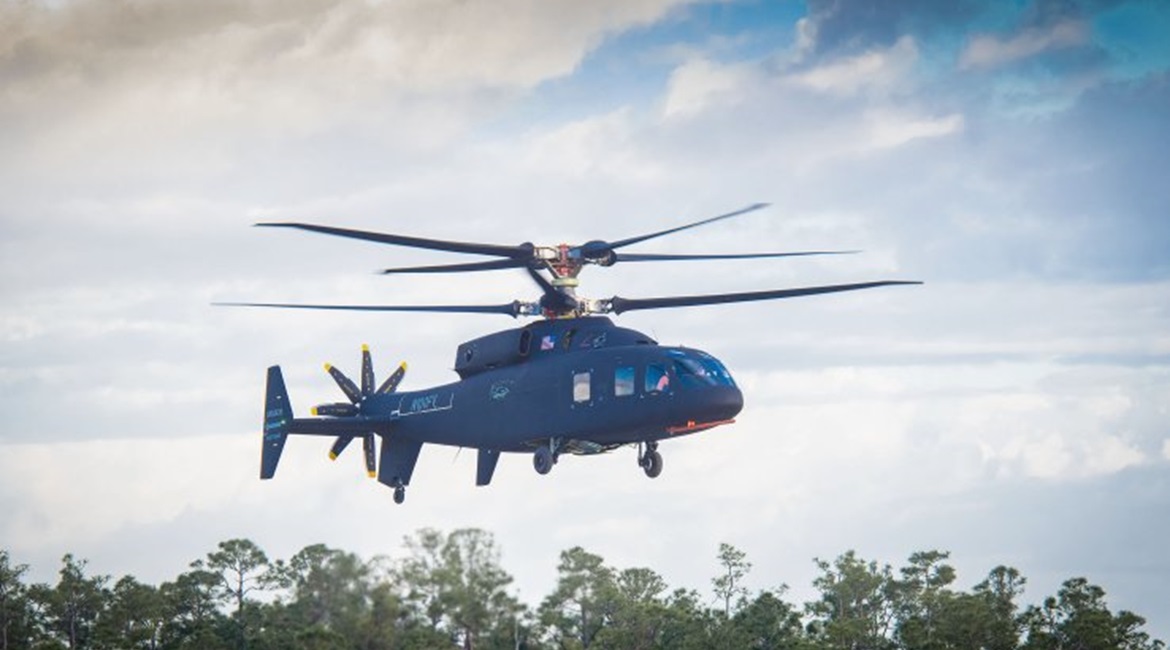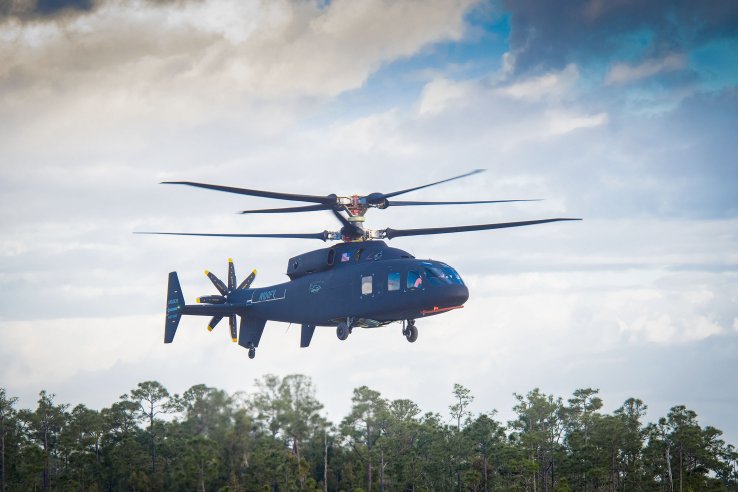
The US Army has received letters of interest (LoIs) from a number of nations regarding its Future Vertical Lift (FVL) programme, a senior service official said on 25 February.

Along with the Bell V-280 Valor, the SB>1 Defiant (pictured) is one of two flying demonstrators for the Future Long-Range Assault Aircraft (FLRAA) element of the US Army’s FVL programme. (Sikorsky-Boeing)
Speaking at the IQPC International Military Helicopter conference in London, Colonel Matt Isaacson, chief of operations and chief integration officer, FVL Cross-Functional Team (CFT), noted that allied nations had signed LoIs related to the US Army’s programme to develop a range of future rotorcraft.
“We have had letters of interest from five allied nations and have expressed a wish to have a dialogue, and we welcome this interest – we are very keen on collaboration,” the colonel said. He declined to name the nations that had so far signed the LoIs.
The US Army’s FVL programme covers the Future Attack Reconnaissance Aircraft (FARA) and the Future Long-Range Assault Aircraft (FLRAA). The FARA effort is seeking to develop a scout-class rotorcraft to fulfil the role previously undertaken by the now-retired Bell OH-58D Kiowa Warrior. AVX/L3, Bell, Boeing, Karem, and Sikorsky are all competing for this requirement, with the Compound Coaxial Helicopter (CCH), the 360 Invictus, an unnamed compound-helicopter concept, the AR-40, and the S-97 Raider respectively. A downselect to two contenders is due in March. As noted by Colonel Isaacson, the FARA is currently the FVL-CFT’s highest priority to increase the US Army’s aviation responsiveness, reach, endurance, and lethality. An initial prototype is due to fly in fiscal year 2023, with initial operational capability (IOC) being achieved in financial year 2028.
Looking to read the full article?
Gain unlimited access to Janes news and more...




